A lot of camera reviews include technical details and specifications, but this one has almost nothing like that. Instead, it has the important things, like why you might want a Bronica ETRS and what it will help you to achieve.
Although they have gone through some small changes over the years, all of Bronica’s 645 models look similar to the casual eye, starting with the original ETR from 1976. The ETRS was manufactured from 1979 through to the early 2000s, and while it shoots 6×4.5cm frames, the design is essentially the same as the Hasselblads that came before it: the camera body is a box in the middle, and you add a lens, viewfinder, film back and an optional grip if you want to.
Originally, Zenza Bronica partnered with Nikon to make the lenses, but subsequently decided to make its own. Unlike 35mm cameras, the shutter is inside the lens and is based around a leaf system, which means it will sync with flash at any shutter speed.
Why a Bronica?
The simple reason why you should buy a Bronica ETRS is because it’s a great camera. I know most people say that about their camera, but in this case it’s true. Obviously it has good and bad points, but to give you an idea of why I like it we can break it down into five key points:
- Weight
- Availability
- Cost
- Lenses
- Simplicity
Weight
A medium format camera will be heavy compared to any 35mm camera, but if you compare the weight of the ETRS to a Mamiya 645 (its nearest rival), the Bronica is noticeably lighter. It’s all relative, though, as by the time you add a lens, viewfinder and grip it starts adding up!
However, it’s not that much different to a high-end DSLR and I carry it in pretty much the same way as a smaller camera – on a shoulder strap that screws to the tripod mount on the bottom of the camera. This lets me quickly move it up to my eye to shoot and I’ll happily walk around for hours like this. It’s great for trying your hand at street photography with large negatives!
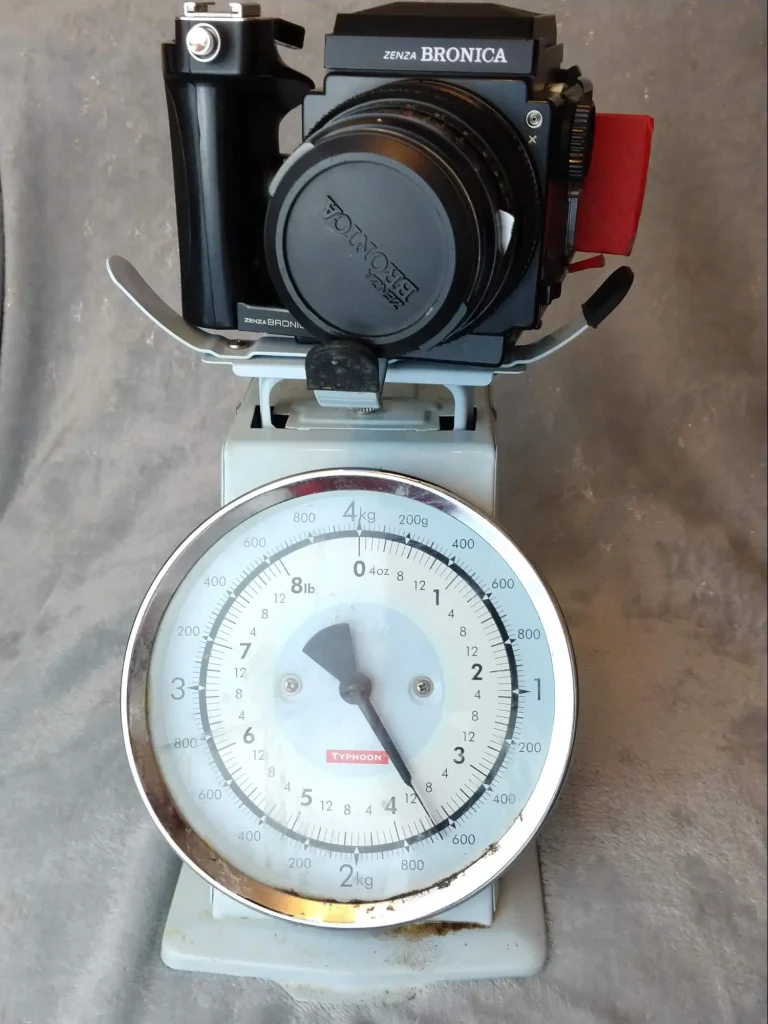
Availability
There are normally plenty of ETRS cameras for sale on eBay and Gumtree (in the UK), or you can buy from a shop like Ffordes or West Yorkshire Cameras, where you’ll get a warranty and friendly and knowledgeable support. I’ve used both shops and can’t fault either of them.
There are plenty of different backs, viewfinders and grips to get you started, including a rare ‘wide back’ for shooting 35mm film a speed grip that combines a shutter release with a winder. Quite often you will see boxed accessories popping up on eBay (especially from Japan).
Boxed lenses also appear quite regularly, and while there isn’t the same range of focal lengths for the Bronica that you’d find on a smaller format camera there are enough lenses for everybody (the 75mm f/2.8 standard lens is common). There are also some zoom and macro options, but they tend to be priced at a premium due to the lack of supply.
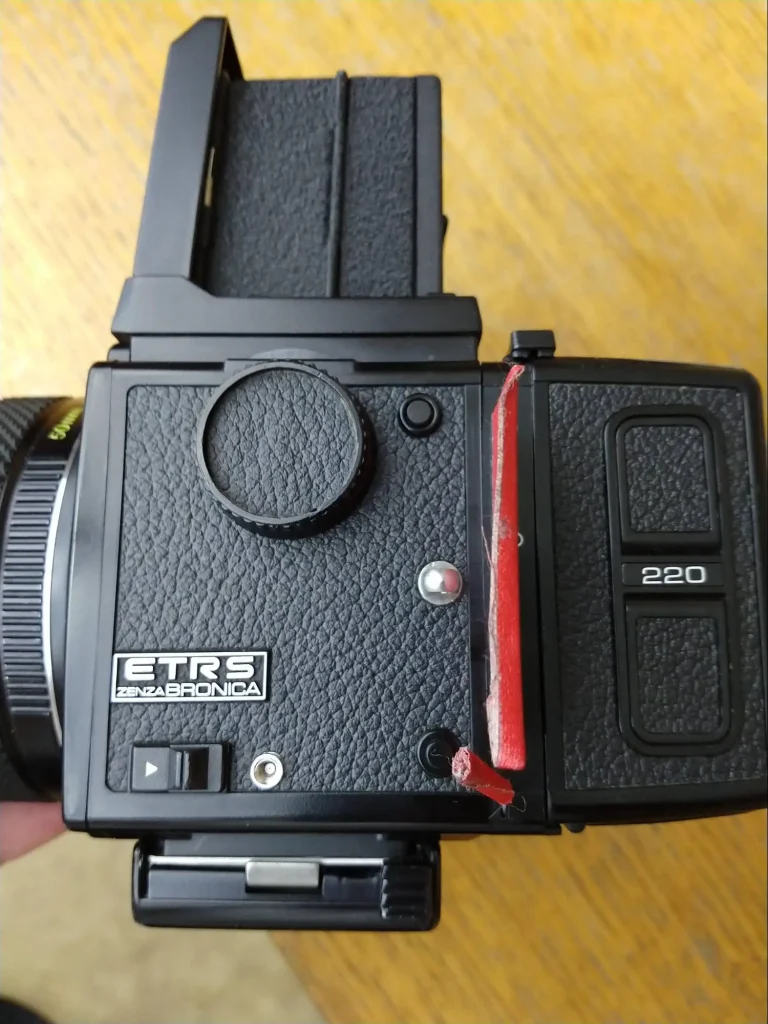
Cost
The Bronica ETRS is extremely affordable, coming in at around £200-£300 with a 75mm lens, depending on condition. I doubt you would find a similar medium format system for the money, otherwise I would have tried it already!
If you want to move up to 6×6 format, the Bronica SQ is also an affordable option (especially compared to Hasselblads and Rolleis), but a good example will cost you in excess of £350, and you would need new glass as well, as the ETR and SQ systems are not interchangeable.
Lenses
Obviously, there are a variety of lenses for the ETR system, ranging from a 30mm fisheye all the way up to a 500mm telephoto, plus a few macro lenses, zooms and a 55mm tilt/shift lens. There are also supplementary close-up lenses and extension tubes.
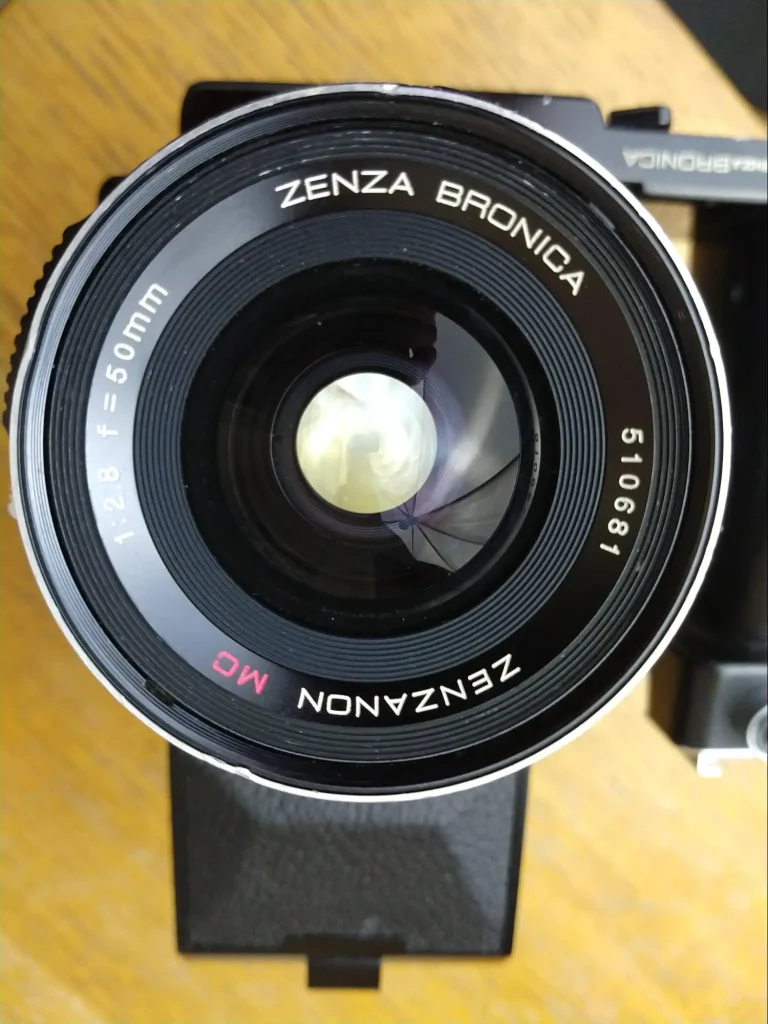
This covers a large enough range for most types of photography: 50mm is good for street and landscape work (and it opens up to f/2.8 as well!), while the 150mm and 250mm primes are great for portraiture.
Simplicity
One of the main reasons to buy a camera like the ETRS is ease of use. With so few buttons and dials, there is isn’t much to learn or go wrong. Once you understand how to load film, advancing a frame is far easier than 35mm and because the exposure counter is slightly bigger than a 35mm camera it’s great for those of us who suffer from vision problems.
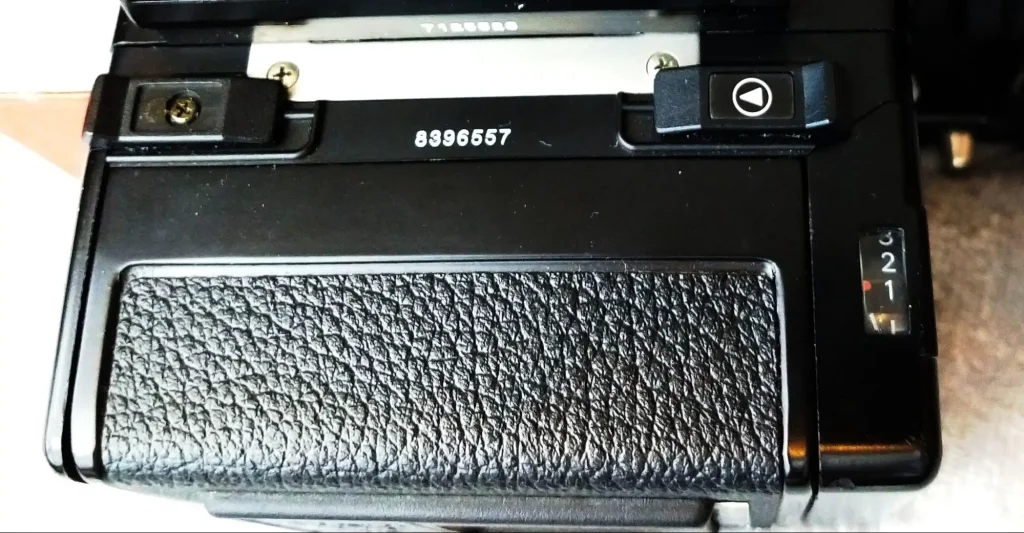
Having the ability to swap backs mid-roll makes it more practical as well, just as long as you’ve got a dark slide to keep your film back light tight.
I’ve only ever used my ETRS with a waist level finder, which is fine for general use, but there is a slight issue is with portraits. Depending on the height of your subject you sometimes have to think about how high you need the camera. I’ve had to stand on stools and chairs to get above my camera and look down into the viewfinder when I’ve been photographing a standing subject and want to shoot from their eye level.
For those who prefer an SLR-style view, a number of prism viewfinders are available. Certain models have built-in metering so you can meter just like your regular SLR as well.
I’m not going to go into every feature on the camera, but it’s worth pointing out that is has a multiple exposure option that is good fun to use, and although the shutter speeds start at 1/500sec and go down to 5 seconds, there is a way to override them on the lens.
Downsides
Like any camera – film or digital – the Bronica ETRS is not without its problems and design issues:
Bulb mode
There is a screw on the lens that you can adjust to give you Bulb mode; you will need a screwdriver to do it, though.
Speed grip
The speed grip almost blocks access to the multiple exposure lever, making it quite fiddly to activate it.
Size
The ‘brick like’ Bronica is in no way ergonomically designed for handholding, although a grip will help. Also, while some bags I’ve used will fit the camera, its boxy design means it’s not quick to get it out again.
Spares & accessories
There are plenty of accessories you can bolt on to the camera, but nothing has been made for decades, so certain items might not be available all the time and prices can fluctuate. Getting cameras repaired could also become difficult if any parts start to become unavailable.
Battery
The ETRS relies on a battery (4SR44/4LR44), so like any electronic camera it pays to carry a spare. The battery is easy to replace (on the bottom of the camera body) and there is a test button.
The results
Perhaps the most important reason for buying an ETRS is the results. From shooting my first roll I’ve been totally amazed by the image quality of the Bronica, especially compared to 35mm.
It’s important to understand light when you’re shooting without a meter, and the choice of film is important as well. I shot my first six rolls on Kodak Portra, because of its reputation. I had never used this film before, but it didn’t let me down. The results were so good that I would wait in anticipation every time I sent some off for developing and scanning.

It’s magical to be rewarded for your hard work, especially when a professional company like filmdev can produce such good scans. Having a good negative will also help in the darkroom, as you can print larger images without any loss of quality.
Conclusion
As far as I’m concerned, the Bronica ETRS is a great option for anyone who wants to get into medium format photography. Sure, there are cheaper ways into 120, like a budget TLR or folding camera, but they don’t have interchangeable lenses or the same choice of backs – it’s great to have some color and b&w loaded and switch between the two! It took a while to get used to loading the film, changing lenses and focusing, but these were moments to enjoy, and using a waist level viewfinder literally makes me look at the world differently.
So talk to the staff at West Yorkshire Cameras or Ffordes, pop in to your local second-hand camera store and look at one. Don’t waste time thinking about it, just make the jump and buy one: if you don’t like it, you can always sell it for the price you paid!
Until next time…
Andy aka Phlogger
Facebook – phlogger.co.uk
Instagram – phlogger.co.uk
Website – phlogger.co.uk
Share this post:

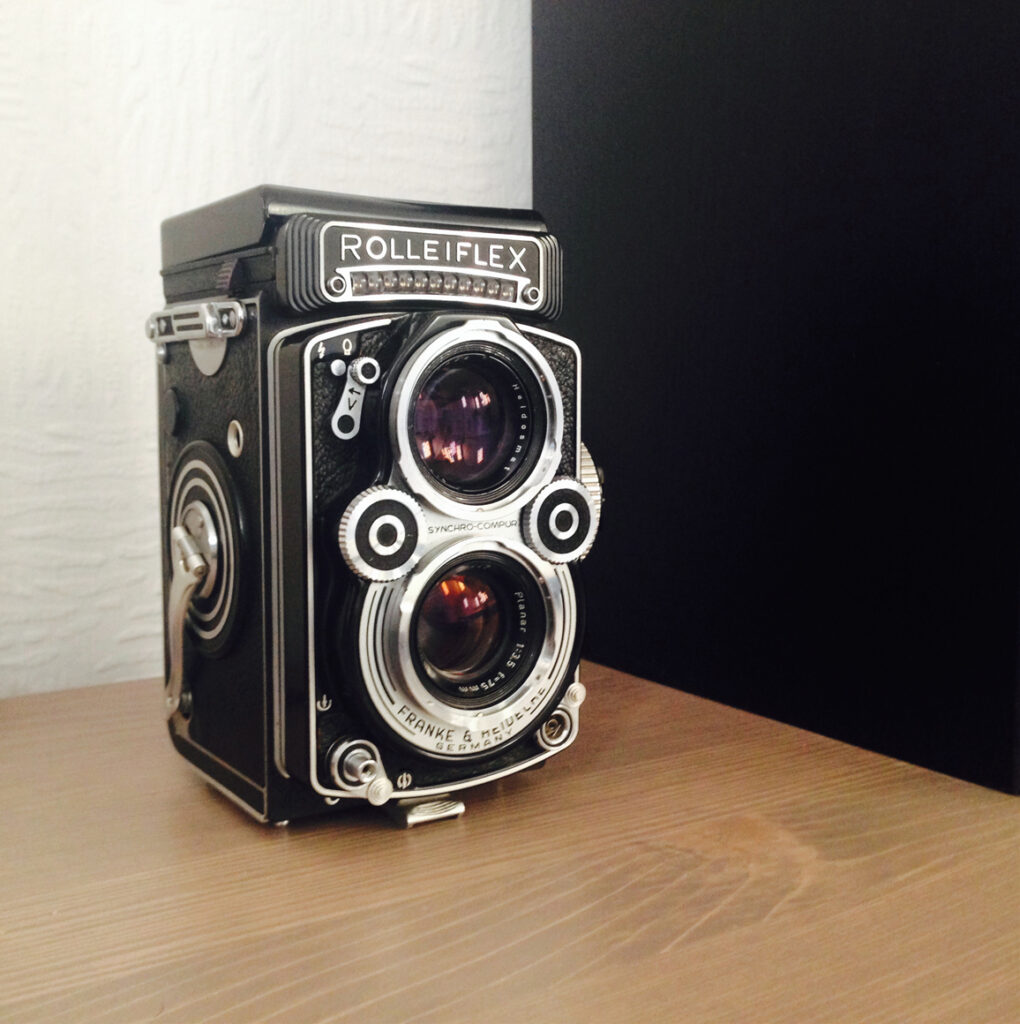
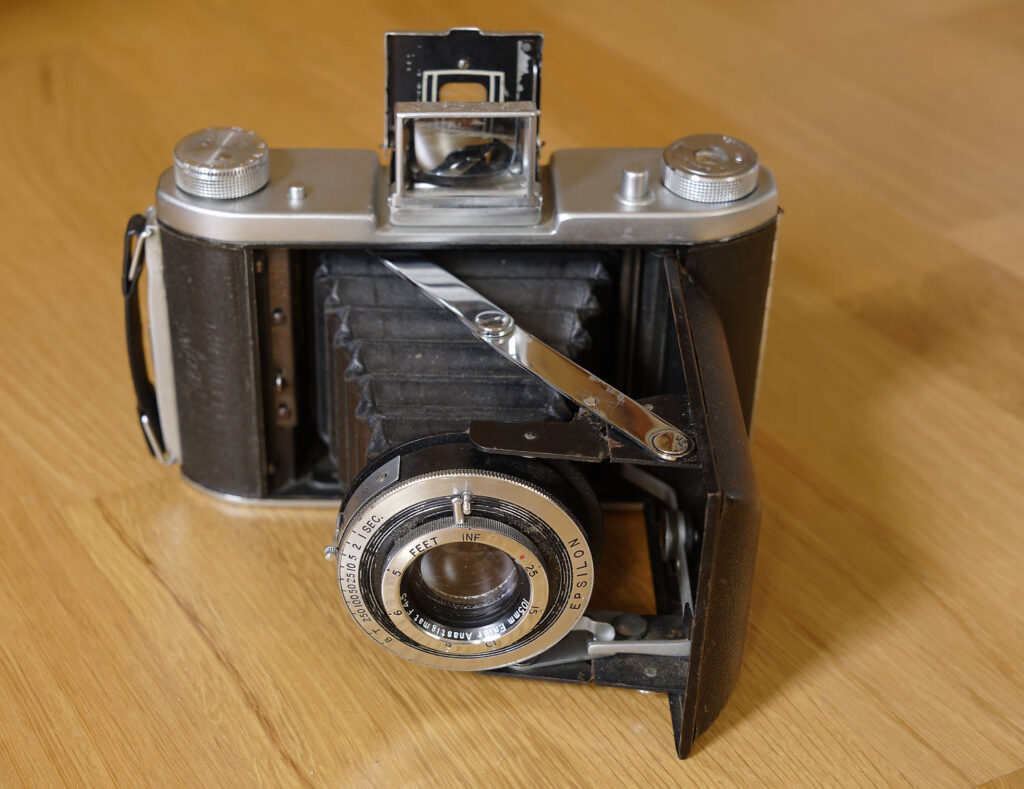

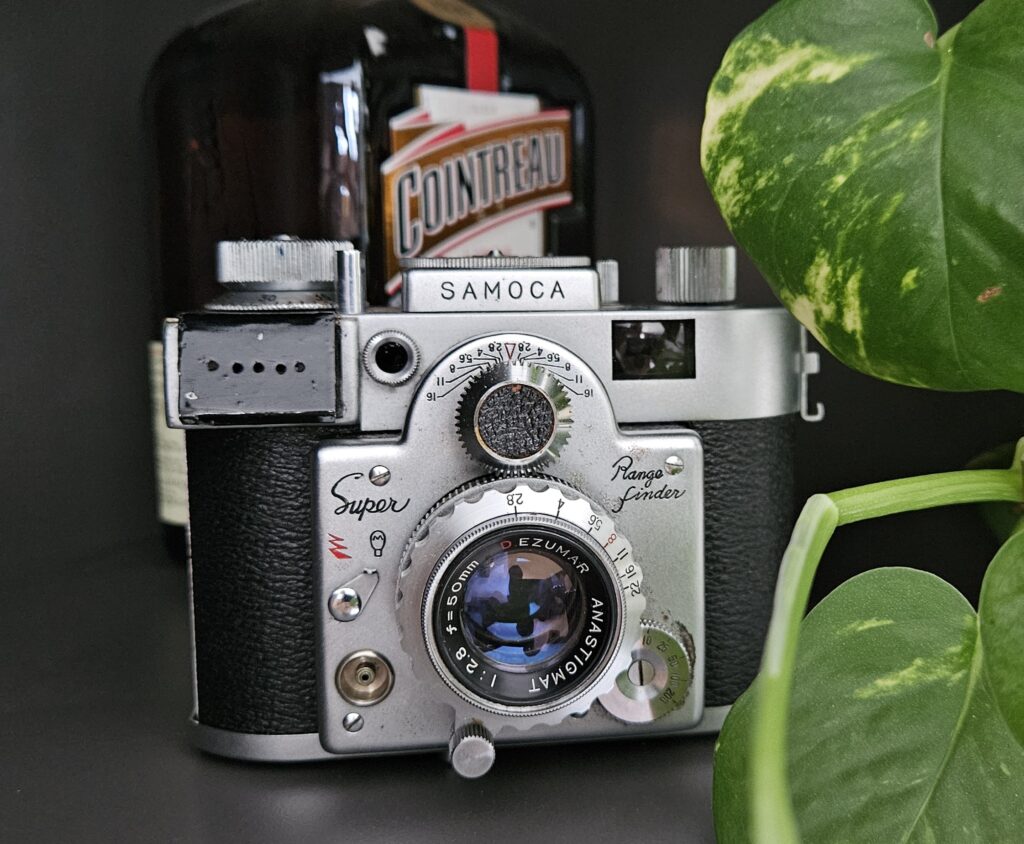




Comments
Harry Berger on Bronica ETRS Review – by Andy, AKA The Phlogger
Comment posted: 01/05/2019
Comment posted: 01/05/2019
Comment posted: 01/05/2019
Zisis Kardianos on Bronica ETRS Review – by Andy, AKA The Phlogger
Comment posted: 01/05/2019
Matt on Bronica ETRS Review – by Andy, AKA The Phlogger
Comment posted: 01/05/2019
BC on Bronica ETRS Review – by Andy, AKA The Phlogger
Comment posted: 01/05/2019
Comment posted: 01/05/2019
George.B. on Bronica ETRS Review – by Andy, AKA The Phlogger
Comment posted: 01/05/2019
Comment posted: 01/05/2019
Kodachromeguy on Bronica ETRS Review – by Andy, AKA The Phlogger
Comment posted: 01/05/2019
Adam Laws on Bronica ETRS Review – by Andy, AKA The Phlogger
Comment posted: 01/05/2019
iGlad on Bronica ETRS Review – by Andy, AKA The Phlogger
Comment posted: 02/05/2019
Patrick Abe on Bronica ETRS Review – by Andy, AKA The Phlogger
Comment posted: 02/05/2019
I considered the interchangeable back ETR/ETRS, but never had to use more than one kind of film per session. It was at least as interesting as a Hasselblad 500C at a fraction of the cost. Having used a waist level finder for years with the 120 TLRs, I also didn't find much reason to stray from the prism finder. All in all, a better package than the M645, which used a Power Winder to do what the Speed Grip could do without a load of batteries.
Geof on Bronica ETRS Review – by Andy, AKA The Phlogger
Comment posted: 02/05/2019
Composing rectangular frames (like the 6x4.5) in portrait mode with a waist lever finder can be a real bear because of the mirrored image. Some people don’t like the WLF, even in landscape mode. They tend to get the prism and grip, which makes the camera physically large and heavier. Most of my shots are in landscape so I almost always shoot my ETRSi in minimalist mode with WLF and no grip. This makes the a small and light, which I love.
One of the biggest selling points is the price of the lenses (and their relative quality.). They are crazy cheap. The only expensive ones are the 30mm fisheye, the 105mm 1:1 macro, the 180mm and the 500mm. The rest (40, 50, 60, 75, 100, 135, 150, 200, and 250) are all very inexpensive. Even the two Bronica branded zooms are comparatively inexpensive. (The Schneider zooms are expensive and the Schneider tilt/shift is unobtanium as I’ve never seen one for sale.)
Comment posted: 02/05/2019
Comment posted: 02/05/2019
Vadim on Bronica ETRS Review – by Andy, AKA The Phlogger
Comment posted: 27/09/2019
I have 2 cameras, 7 lenses including 30 and 500 mm, all type of viewers, screens, speed and motor winders, dedicated flashes and so on.
It is easy to use and lightweight camera with many easy to find devises.
But after all we use camera for the pictures and unfortunate is a huge minus of this Bronica system.
Pictures of Bronica ETRSi are somehow anaemic. Low contrast, flat and without any personality and boring out of focus background.
Yes it is mush better that 35 format but it is not correct comprising since Bronica is a medium format camera and has to be compared with other medium format cameras. Not that you cannot get a good pictures from Bronica ETRSi. You just have to work much harder than with other systems.
I used Mamiya RZ67 ones - results was amazing.
I also used several Hasselblads - results are astonishing.
I also has a Bronica GS system that also had very good results
Now I am planning to sell all my Bronica equipment and to switch to Hasselblad system
Comment posted: 27/09/2019
Comment posted: 27/09/2019
Comment posted: 27/09/2019
Vadim on Bronica ETRS Review – by Andy, AKA The Phlogger
Comment posted: 30/09/2019
But every time I get a HASSAELBLAD or LEICA from my college I am amazed by the how much quality of the photos better in relation to the Bronica and how difficult to use them comparing to Bronica- for me at least. BTW I really liked your review.
Flaviio81 on Bronica ETRS Review – by Andy, AKA The Phlogger
Comment posted: 27/04/2022
I loved my C330 system, had almost all the lenses for it, but now that i have a complete ETR system, i'm not missing it at all.
Bill Watts on Bronica ETRS Review – by Andy, AKA The Phlogger
Comment posted: 22/06/2024
I have an ETR-Si and an SQ-Ai along with a number of backs, lenses and other accessories which serve me well. Although today (2024) I would dispute them being cheap. I fortunately, bought mine in the early 2000's when they were practically being given away in the switch to digital.
Wonderful cameras with good glass.
SSSFacebook on Bronica ETRS Review – by Andy, AKA The Phlogger
Comment posted: 23/08/2024